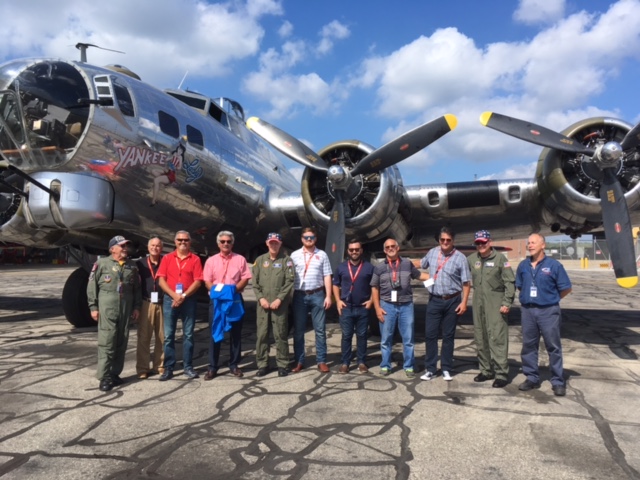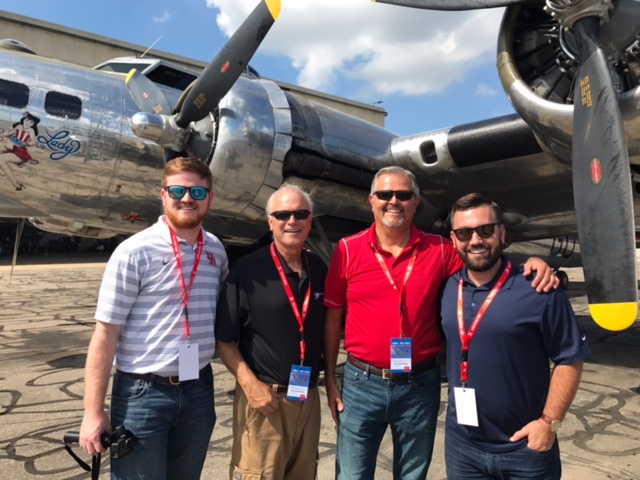Saving The Historic Willow Run Bomber Plant
What does the United States do when it needs 18,000 B-24 bombers?
It looks to Michigan, where in 1941 the largest manufacturing plant of its time was constructed by Ford Motor Co.’s Charles Sorenson. The 5 million square foot Willow Run facility—known as the “Bomber Plant”—was designed to meet the demands of a war that would be decided in the air.
Allied nations were under hard pressure to match and overcome Germany’s growing advantage in the skies. In America, that pressure was applied directly to Sorenson and Ford from the White House, where President Franklin D. Roosevelt’s concerns with slow B-24 production were growing into frustration.
“According to Henry Ford, the only way to produce the numbers that President Roosevelt demanded for the war effort was to build them on an automotive style assembly line,” said Dennis Norton, Founder of the Yankee Air Museum. “After hearing Henry Ford say he could build one B-24 per hour instead of one B-24 per month, Roosevelt was convinced. Ford was given the largest contract ever signed to that point in time by the U.S. Government, and Willow Run was born.”
In September 1942, the very first B-24 rolled off the Willow Run assembly line, and by 1944, the plant was producing one B-24 every 55 minutes. Sorenson and Ford were living up to the hype and the need pressed by Roosevelt’s White House, and it wouldn’t be long before these planes contributed to Allied victories across Europe and the Pacific.
Over the course of its wartime production, the facility saw more than 70,000 workers come and go. Women made up almost half of the workforce and played an integral role in the Bomber Plant’s success, even filling many leadership roles and testing completed planes. The famous “Rosie the Riveter” came from Willow Run. Her real name was Rose Will Monroe.
When the war effort concluded and America’s pilots returned home, the plant was sold to Kaiser Fraser, which built more than 800,000 cars there before General Motors Co. ultimately purchased the Bomber Plant as a production facility for engine transmissions.
The Bomber Plant that once helped deliver victory to America and the Allies now played a key role in producing the automobiles that redefined life for the middle class, providing affordable, reliable transportation to millions of Americans. Production continued until 2010 when GM forfeited the site following bankruptcy re-organization, and RACER Trust came into ownership.
GM helped facilitate a meeting between RACER Trust and Yankee Air Museum, and through a tremendously successful campaign, the Museum proved to RACER it could raise the funds necessary to restore the facility. With a number of generous contributions, the Museum purchased the plant in 2014. The restoration project cost approximately $18 million. Today, Yankee Air Museum operates out of the Willow Run Bomber Plant and is open to the public.
“We can look back on what happened at Willow Run with pride and a sense of accomplishment,” said Norton. “We really did save the world and that is the history we want to preserve.”
The Willow Run Bomber Plant is a point of pride for generations of Michigan families, and a testament to the strong, enduring persistence that led Allied forces to victory. NEXUS Gas Transmission (NEXUS) understands and appreciates the meaningfulness of sites like Willow Run and is proud to play a role in this community, rich in American history and sacrifice.
“As much as we appreciate being a part of this project, the real thanks and appreciation should be given to the great people who work and volunteer at the museum. Their hard work and dedication is at the heart of what makes the exhibits and programs so successful,” said Adam Parker with NEXUS “It truly is a team effort, and we’ve been proud to come alongside the dedicated people at the Yankee Air Museum.”
Read More Blogs


